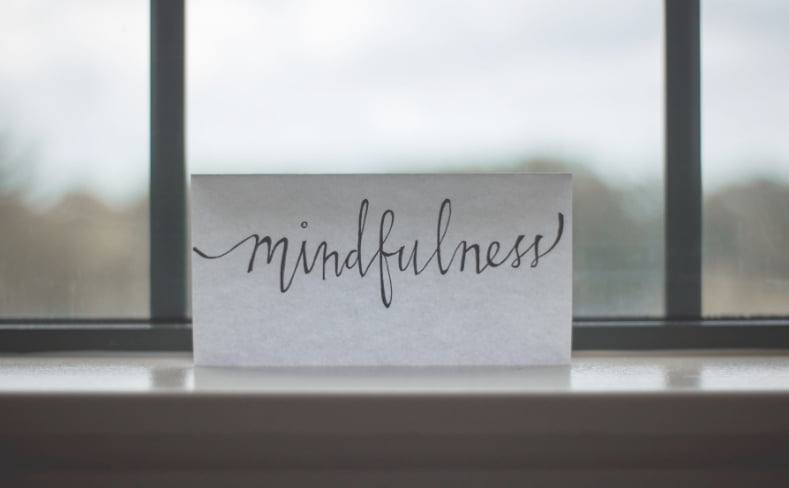Why Is Mindfulness Important? How Mindfulness Meditation Can Help You Beat Opioid Addiction
Are you curious about the relationship between mindfulness and addiction recovery?
The term “mindfulness” has been tossed around a lot lately. Many people assume that mindfulness is only for Buddhist monks and yoga practitioners.
However, the concept of being mindful can apply to all aspects of our lives. Mindfulness can help us navigate medical issues, relationships, and mental health with greater ease.
But why is mindfulness important when it comes to addictions?
In this post, we look closely at the ways practicing mindfulness can aid in opioid addiction recovery.
What is Mindfulness?
“Being mindful” generally means being more aware. But what does it mean to practice awareness?
We are aware when we are able to closely observe the life around us–including our own. What’s more, true mindfulness is awareness without judgment.
A great way to understand mindfulness is through meditation.
Contrary to popular belief, meditation is so much more than just ‘clearing the mind.’
When meditating, people embody stillness. They do this by physically sitting still (or lying down). They also practice observing the mind’s activity without directly engaging with that activity.
Through this stillness, meditation may actually quiet or ‘clear’ the mind. It can also enable meditators to focus on something else, like their breathing. Meditators may also internally repeat a mantra, a key phrase or word.
Mantras and breathing practices can encourage greater awareness in the present moment–without judgment or emotional attachment.
Mindfulness, then, is much the same. It means moving about our day-to-day lives with more awareness of our actions, our feelings, and our environment.
It also means being more intentional in general. When we are deliberate about our actions, we tend to act from a space of awareness.
You can practice mindfulness in hundreds of ways, including meditation. You can be mindful when eating, for example, or cultivate mindfulness through yoga, tai chi, and exercise.
Indeed, mindfulness is more a lifestyle than an activity!
Mindfulness and Addictions
So why is mindfulness important when it comes to addictions?
Physical and Psychological Dependency
Let’s think about what addiction actually is. When someone is addicted to a substance or a behavior, he or she is said to “depend” on that thing.
When it comes to substance addiction, this dependency is often extremely physical. Addicts may experience severe and painful withdrawal symptoms if they become too dependent on a certain substance.
These withdrawal symptoms launch a vicious cycle of dependency. In many cases, the easiest cure for these symptoms is more of the substance itself.
Yet addictions aren’t always purely physical. In many ways, they also involve psychological elements.
This is especially true when it comes to behavioral dependencies, such as sex addictions.
Being Mindful
Luckily, mindfulness can aid with both physical and psychological dependencies.
One of the first steps to change, after all, is awareness. Recognizing and acknowledging a dependency often has to happen first before an individual can seek help.
Yet it can take time to get to that point. Many addicts experience no small amount of shame in admitting a dependency. Others may not believe help is an option.
That’s where mindfulness comes in. Cultivating greater awareness of how you are experiencing an addiction can make it easier to actually claim that addiction.
Individuals can cultivate awareness in a variety of ways. They can use meditation, for example, or even a vigorous run to alleviate withdrawal symptoms.
They can also learn more about the nature of their dependency–what may be lurking underneath the surface.
All of these actions serve to empower addicts, helping them to understand themselves and their addictions.
How to Be Mindful When Recovering From Addiction
How can you be mindful when you are recovering from an addiction?
Here are a few tips to keep in mind.
1. Practice Awareness Without Judgment
This is essential when it comes to addiction recovery. Addictions often perpetuate or exacerbate self-judgment.
As you recover from an addiction, you may be experiencing negative self-talk.
You may also be questioning your ability to recover. Some people experience judgment from friends and family members as they seek treatment.
Practice mindfulness by observing things without judgment. Meditation practices can help in this regard.
If you do find yourself judging how you are feeling, practice acknowledging that judgment–and then try to let it go.
Avoid the impulse to analyze. Save that for a counseling couch!
2. Use Deep Breathing
There’s a reason why a lot of yoga practitioners emphasize the value of deep breathing. Paying attention to our breath is a great way to stay grounded in the present moment.
It can also help us become more mindful, if only for a handful of minutes.
Use deep, steady breathing to practice mindfulness. This can be valuable when you are experiencing turbulent emotions or intense withdrawal symptoms.
It can also be helpful if you are having trouble falling asleep, curbing cravings, or talking with loved ones.
3. Be Physically Mindful
It’s important to take care of your body as you are recovering from any addiction. Practice physically mindful habits to ensure your recovery is as smooth as possible.
This means eating nourishing, healthy food. It may also mean exercising as much as possible (without overdoing it).
You may wish to do body scans to check in with how you are feeling in any given moment. These can be really useful when it comes to working through emotions or withdrawal symptoms.
Why is Mindfulness Important?
Why is mindfulness important when it comes to addiction recovery? Recovering from an addiction can be psychologically and physically challenging.
Mindfulness means awareness. Practicing non-judgmental awareness of your recovery process can ensure a safe and intentional healing process.
It can also make sure you are giving your body the love it deserves during this difficult time and help to reduce stress. Being mindful can make it easier to transition to a treatment center or program. It can even help with your relationships during this time.
What’s more, mindfulness habits can supplement an existing treatment plan, including using methadone. Curious about how methadone can help you or a loved one recover from opioid addiction?
Learn more here or give us a call at (855) 976- 2092!
References
Inner IDEA. (n.d.). Meditation 101: Techniques, Benefits, and a Beginner’s How-To. Retrieved from GAIAM.COM: https://www.gaiam.com/blogs/discover/meditation-101-techniques-benefits-and-a-beginner-s-how-to
Astin J, A: Stress Reduction through Mindfulness Meditation. Psychother Psychosom 1997;66:97-106. doi: 10.1159/000289116 Retrieved From: https://www.karger.com/article/abstract/289116










